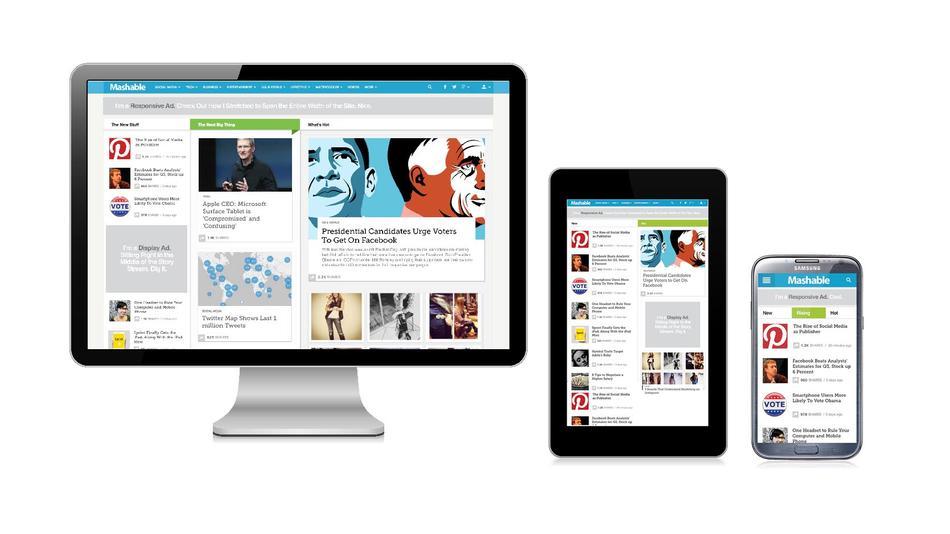 Being a designer is a constant balancing act, especially when delivering the initial concept for a new site. You must balance what your client wants, what the target audience needs, and maintain the standards of the design world. How do you decide which opinion is most important?
Being a designer is a constant balancing act, especially when delivering the initial concept for a new site. You must balance what your client wants, what the target audience needs, and maintain the standards of the design world. How do you decide which opinion is most important?
In this week’s article, I’ll discuss how to deliver a product your client will love to call their own, that users will be delighted to return to, and that you’ll be proud to add to your portfolio.
Gathering Information
As usual, the first step is to talk to your client. At Optimum7, all new clients are required to fill out a questionnaire about their business. Ideally, this questionnaire gives us all the information we need to plan and execute a project.
But what do you do if your client won’t fill out the questionnaire? If this is the case, find out why he or she is opposed to filling out the survey. Is he or she overwhelmed? Confused? Maybe just a little impatient? Some clients need a bit of hand-holding, especially in the initial stages of the design process. Whatever the case may be, one thing is for sure – you need to get that information.
If the client absolutely will not fill out the questionnaire, you’ll need to improvise. Have a representative or you, contact the client and set up a time to meet via phone or in person for a “New Client Interview”. During this interview, ask each question on the questionnaire. Do not move on to the next question until the previous is answered. Take copious notes and take a tape recorder with you, for future reference. I also recommend using a laptop and filling in the questionnaire as the client answers verbally. This way, you won’t need to take time later to go back and fill out the form after the interview is finished.
When you’ve finished the interview and completed any necessary edits to the form, send a copy to your client for final edits and confirmation. This gives the client an opportunity to make sure that nothing was lost in translation, and that all key points are mentioned.
Get Examples
In addition to the questions you will ask during the interview/survey stage, it is important to ask the client for samples of work they like, work they don’t like, etc. When you receive these, I’d recommend asking what specific aspects they like about these examples, or what they dislike. This will help give you a better idea of what your client might be looking for in their site design.
Understanding the Client’s Dedication to the Project
I often find myself perplexed by how little influence some clients want to have on their design. But then I remember, I am the designer and he or she is the business owner. I am providing a service to them – just as I would require services from a plumber, an electrician, a car wash technician, etc.
In these cases, the business owner and I have something in common. We understand our limitations. I am not an electrician. All I know is that electricity powers my stove, cools down my otherwise hot, humid abode, and garners me a bill at the end of each month. And I am perfectly okay with that! I don’t need to understand the ins and outs, or tamper with the system. Just as some design clients deem it best to leave the work to the experts.
Other clients don’t exactly see things this way. In my past, I’ve had plenty of clients try (and sometimes succeed, regrettably) into turning me into a mouse-moving, pixel-pushing puppet. This is typically true of clients who don’t understand their limits.
The latter is obviously the most dangerous type of client you can encounter, and will require extreme caution on your part. This client can become a problem mainly because of respect issues. A client that continuously challenges your work and your advice ultimately may not respect you. Once you lose that respect, you’ve lost the battle.
So how do you maintain respect throughout the design process? The first way to do this is to give respect. Be professional, polite and knowledgeable. Another important aspect is honesty. Help your client understand why you made the decisions you made and explain honestly how you envision those decisions effecting users. By demonstrating your expertise and thoughtfulness early in the project, you will lay the groundwork for a respectful, trusting professional relationship.
Understanding the Goal of the Site
Do you remember how we gathered all that information in the client interview/survey? One of the main reasons we did that was so we could answer this single question: What should the site do?
We need to understand exactly what the client would like the site to do for them – what is the goal for the user? Some common goals are the following:
- Make a purchase
- Call you
- Write a review/comment
- Read an article
- Share a blog post
- Watch a video
- Fill out a contact form
- Become a member
It is crucial to understand which of these (or which combination of these) is the desired outcome for potential users. Without this knowledge, we can’t successfully convince a user to complete this action.
Keep that Goal in Mind
Another reason the goal of the site is important to the design process is because it helps us make educated decisions throughout the project.
In addition, when your client has concerns about certain aspects of the site, you can always remind him or her about the goal of the site. Ultimately, you need to make it as easy as possible for the user to complete the desired action. If the client suggests something that could possibly interfere, explain the potential consequences. Explain that although you want your clients to have sites that are beautiful in their eyes, you are ultimately designing for the user.
Understanding Maintenance Intentions
During the initial phases of the design process, it is important to understand how often the client will be updating their site. This will influence your decision to include a blog section or integrate an eCommerce platform. If a client doesn’t have the resources to keep the site updated, it may be better to go with a simpler, more static design. After all, nothing is worse than a blog link leading to three articles that were posted in July of 2007.
On the other hand, if you have a client who is outrageously involved in creating excellent content, it is vital that your site spotlight that content appropriately. If the client has an informative, engaging weekly video, make sure it’s easily accessible to users.
In a recent content strategy webinar, Sara Wachter-Boettcher explains how we need to view websites more as “living, breathing” entities rather than static sources of information.
Start Small
When designing an initial concept, I like to begin with a homepage mockup. Now, I’d like to point out here that I don’t necessarily believe that the homepage is the most important page on every site. The most important pages vary from client to client.
For blogs, users will likely enter through article pages, which means those inner pages may be much more valuable than the homepage. However, I like to begin because I believe it gives clients a better idea of the overall look and feel I am proposing for the site.
Quite recently, I’ve been attempting to design with a more mobile-first perspective. This basically means that I am learning to design with mobile (phones, tablets, etc.) in mind. Since nearly every site design I propose is responsive, I keep in mind how certain aspects of the layout will move and adapt to their device. However, I don’t typically send these notes to all my clients with the initial homepage mockup.
In reality, while responsive design may be one of the hottest topics in the tech world right now, the concept may be completely foreign to an “average Joe” client. Unless you are able to explain the entire concept of responsive design, and your intentions with their site, I’d keep the plans to yourself. If they ask questions, answer them. However, for clients who want little to do with the project, and can comprehend even less, it can be important to give them information piecemeal.
When Presenting that Initial Concept
I often find myself committing a crime against design (and possibly humanity itself): I assume too much. In the past, I’ve sent a homepage mockup to a client, explaining how the site will look, act, etc. only to receive an angry email in response asking in what language the content on the site is written.
Not everyone knows what Lorem Ipsum is.
For those of you who may be reading this and not have the slightest idea what I‘m talking about, Lorem Ipsum is basically placeholder text. It’s an entire language that repeats itself and varies the number of characters in each word, and words in each sentence. It allows designers and clients to envision the site a bit better without having all content finalized.
*Pro Tip: If you’re sick of that boring old Lorem Ipsum, try Cheese Ipsum. It fills your pages the same way Lorem Ipsum does, but adds a bit of whimsy for all the dairy-loving fiends out there like myself. ;-)
*Pro Tip #2: If you don’t think your client can handle Lorem Ipsum, or may break into cold sweats at the sight of Cheese Ipsum, allow me to introduce Blokk Font. It’s text that isn’t text, for “clients who do not understand Latin.”
The point is, you can never assume what your client does or doesn’t know. When sending the initial concept, be sure to prepare a detailed presentation on each aspect of the site. You should explain the different elements of the site, how they work, why you made the decisions you made, and, of course, that certain aspects may be placeholders until other information is finalized.
The Takeaway
It is impossible to deliver a product that makes everyone happy. But in reality, you truly shouldn’t be designing to please everyone. Instead, you should be focusing on designing for your users and making decisions that will make them happy to return to your site again and again. Trust me, in the long run if your users are happy, your client will be happy.
Looking for a designer who will create a site for your target audience? Contact Optimum7 for a free consultation today.
Photo Credit: Sharp Suits





